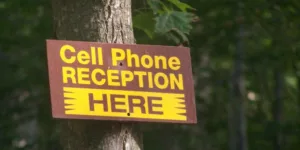Studies have highlighted that the average human spends around 4 hours per day on their cellphones. This effectively means that uninterrupted cellular signals are something that holds a top priority amongst, well, almost everyone with a cell phone.
What are ‘dead zones’
We all hate it when we’re in a coverage area that drops a call, or when you walk into a building that has bad cell phone signal coverage. The name itself paints quite a clear picture of the definition of a dead zone.
The term refers to an area of low or almost negligible signal strength that hampers the cell phones’ ability to receive or transmit data over radio waves. There can be a number of factors that contribute to dead zones in a commercial or residential locality.
Some of these include:
- Distances: Each signal tower has a specific range which is limited to a certain area. Although cellphone towers cover the urban localities quite extensively, the signal strength weakens as you move away from the tower. This means that at the outer end of the radius covered by a certain cell phone tower, the cellular network strength might drop to as low as one bar.
- Building materials can hinder signal strength: You might have noticed that holding a cellphone outside the window increases the signal strength considerably. This is because modern building materials are not only good at protecting residents from natural elements and disasters but are also block cellular signals. Concrete, steel and glazed windows can obstruct signals from cell phone towers creating dead zones indoors.
- Nature: As surprising as it may sound, nature and the accompanying elements can have a substantial influence on the amount of signals that an area receives. Hurricanes or strong winds, mountains and valleys can also cause potential dead zones in the surrounding localities.
How to avoid dead zones:
Change of locations
Starting off with conventional measures, experts advise that in order to overcome a dead zone you can try changing your location a little bit. Heading for a relatively open area allows major improvement in cellular strength.
Use of signal boosters
Surveys conducted across the country reveal that as many as 97% cellphone users resort to evasive steps in order to overcome dead zones by employing a variety of measures. The majority resort to indoor calling which as we’ve seen is not exactly the most result oriented. Cell phone signal boosters allow users to receive more powerful signal strength.
Signal boosters are made for all types of situations and sizes. Large scale signal boosters for buildings help create a more consistent signal indoors. Smaller boosters for home use are also available. There are also signal boosters for RVs, boats and pretty much anything else that might need them.
Depending on what coverage area needed, pricing and be reasonable to expensive. There are a number of leading manufacturers in the industry and just about all of the major American cell phone carriers have some version of a signal booster available.








